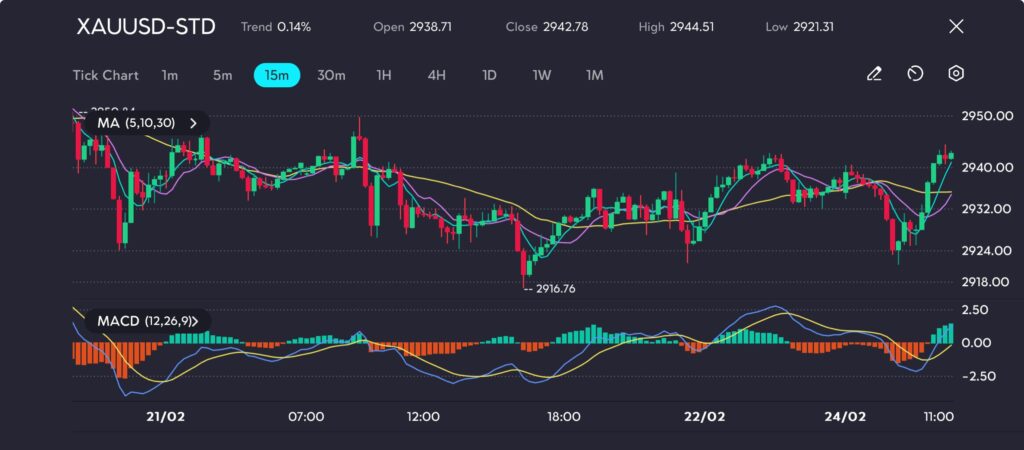
Key Points:
- XAUUSD (Gold) trades lower at $2,942.78, down from recent highs of $2,954.69.
- Markets await crucial U.S. PCE inflation data due Friday.
- Renewed tariff fears and global tensions may support gold prices.
XAUUSD (Gold) eased slightly on Monday to trade at $2,942.78 per ounce, slipping from its record high of $2,954.69 reached last week. Investors booked profits after recent sharp gains, taking a cautious stance ahead of key economic events this week.
Investor attention is focused on Friday’s Personal Consumption Expenditures (PCE) inflation report from the U.S., crucial for setting the Federal Reserve’s policy expectations.
The recent announcement by U.S. President Donald Trump to impose further tariffs—particularly on lumber and forest products—added to market uncertainty. Such tariff measures could reinforce inflationary pressures, influencing Fed decisions and, by extension, XAUUSD’s direction.
Technical Outlook: XAUUSD Eyes Another Run at Record High

Image: XAUUSD sees volatile session, closes higher at $2942.78 with bullish momentum picking up. Learn more on the VT Markets app.
XAUUSD (Gold) closed slightly higher at $2942.78, registering a gain of 0.14% after opening at $2938.71. Price action throughout the session was volatile, trading between the support at $2916.76 and resistance at $2944.51.
The moving averages (MA 5,10,30) reflect mixed sentiment, recently turning upwards as prices broke above these levels, suggesting a potential shift towards bullish momentum. The MACD (12,26,9) indicator supports this view, crossing into positive territory and indicating strengthening bullish momentum.
Traders should closely monitor resistance near $2944.51; a break above this level could signal further bullish moves, while support at $2916.76 remains critical for any downside pressure.
Global Tensions Continue to Influence Market Sentiment
Internationally, traders remain attentive to ongoing developments between the U.S., Russia, and Ukraine. Trump’s acknowledgment of Russia’s invasion and announcement of an upcoming minerals agreement with Kyiv are viewed as potentially significant shifts toward a peace resolution.
Simultaneously, tensions in the Middle East persist, with Israel and Hamas maintaining a fragile ceasefire dependent upon prisoner negotiations. Such unresolved geopolitical issues may continue to support gold’s safe-haven demand.









